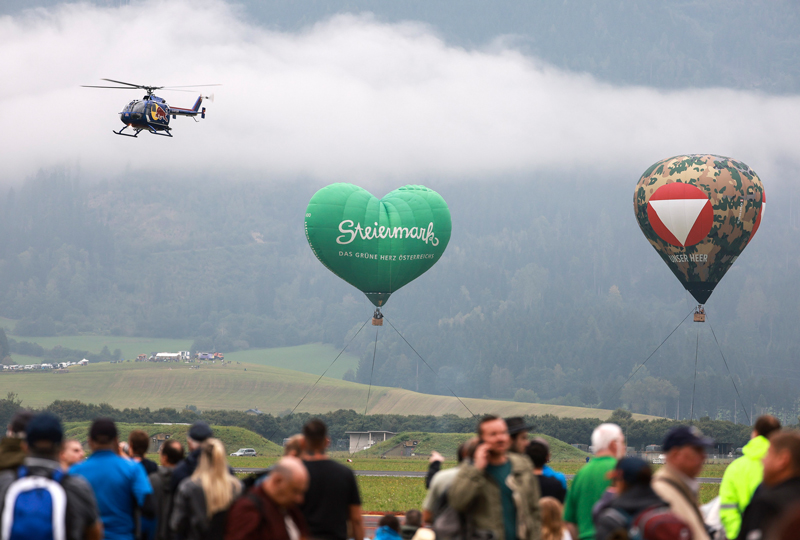
The Museum of Military History in Vienna advertises with the great slogan: “Wars belong in museums”. And warbirds, restored, and of course demilitarised fighters, belong at airshows and with the Flying Bulls. In Hangar-7, a North American T-28B Trojan can now be seen again, along with several other warbirds.
The old lady – as aircraft of her generation are affectionately called by pilots – served no fewer than four different air forces from 1955 to 1980.
The US Navy made a start. In 1954, legendary aircraft manufacturer North American Aviation – already prominent in the Flying Bulls’ fleet with a B-25J Mitchell, a P-51D Mustang, and, more recently, a T-6D Harvard – began production of 489 Trojans in the Navy’s T-28B version. Compared to variant T-28A, it was equipped with a more powerful Wright engine and a three-bladed propeller. From 1950 to 1957, a total of 1948 Trojans in versions A to D were produced. The low-wing aircraft with a tandem cockpit for flight instructors and students was intended primarily as a training aircraft, but was ultimately also used as a light ground combat aircraft and, above all, in version D for counterinsurgency (COIN).
The Flying Bulls’ Trojan soon entered the Vietnam War and was even handed over to the South Vietnamese Air Force in 1962. However, when South Vietnam and the U.S. intervened in the Laotian civil war two years later, it was made available to the Kingdom of Laos, which had lost a T-28 a year earlier with serious consequences. A lieutenant in the Royal Lao Air Force had defected with his Trojan to North Vietnam.
The aircraft was commandeered and soon after proudly unveiled as the North Vietnamese Air Force’s very first combat aircraft. It was also, almost logically, the first Vietnam People’s Air Force aircraft to take a U.S. aircraft; it knocked a Fairchild C-123 out of the sky.
“Our” Trojan officially remained with the Kingdom, but from 1969 was left to the notorious Ravens, who flew covert missions into Laos on behalf of the CIA, primarily scouting and marking targets for bombing. Thus, they played their part in making Laos the most bomb-hit country in the world on a per capita basis. But even with two million tons of bombs, the U.S. failed to cut off the Viet Cong’s supply from north to south. Then in 1975, both the Vietnam War and the Laotian civil war ended in defeat for the U.S. and its allies.
The Flying Bulls’ Trojan lingered in Southeast Asia, but changed colours again and was transferred to the Philippine Air Force in 1976, where it ended its career as a military aircraft. In 1980, it was disassembled and stored at Villamor Air Base in Manila until a U.S. citizen bought it, brought it back to its country of manufacture, and reassembled it. In 1995 it was exported to Canada, and in 2017 it became the property of the Norwegian Flying Aces, who eventually sold it to the Flying Bulls. The ‘old lady’ can now be seen in Hangar-7, spick and span, when she is not proving at airshows that she is far from old news.
North American T-28B "Trojan"
Technical Data: